Map: Expansion of Farming in Western Eurasia by Detlef Gronenborn
see below, 2023
Condensed and simplified map of the spread of farming in western Eurasia.
Gronenborn, D., & Ho... more Condensed and simplified map of the spread of farming in western Eurasia.
Gronenborn, D., & Horejs, B. (2023). Expansion of farming in western Eurasia, 9600 - 4000 cal BC (update vers. 2023.1). Zenodo. https://doi.org/10.5281/zenodo.10047818
See repository: DOI 10.5281/zenodo.10047818
This work is licensed under a Creative Commons Attribution 4.0 International License.
To view a copy of this license, visit http://creativecommons.org/licenses/by/4.0/
The data or other third party material behind this image are not included in the image’s Creative Commons license. If not indicated otherwise, users will need to obtain permission from the license holder to reproduce the material.
First version of the map "Expansion of Farming in Western Eurasia" from 2005. From: D. Gronenborn... more First version of the map "Expansion of Farming in Western Eurasia" from 2005. From: D. Gronenborn, Bauern - Priester - Häuptlinge. Die Anfänge der Landwirtschaft und die frühe Gesellschaftsentwicklung zwischen Orient und Europa. In: F. Daim/W. Neubauer (Hrsg.), Zeitreise Heldenberg. Geheimnisvolle Kreisgräben. Katalog zur Niederösterreichischen Landesausstellung 2005 (Horn, Wien 2005) 114–123.
From: D. Gronenborn, Silexartefakte der ältestbandkeramischen Kultur. Mit einem Beitrag von Jean-... more From: D. Gronenborn, Silexartefakte der ältestbandkeramischen Kultur. Mit einem Beitrag von Jean-Paul Caspar. Universitätsforschungen zur prähistorischen Archäologie 37 (Bonn 1997).
Papers Eurasia by Detlef Gronenborn
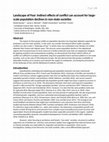
J. Royal Society Interface, 2024
The impact of inter-group conflict on population dynamics has long been debated, especially for p... more The impact of inter-group conflict on population dynamics has long been debated, especially for prehistoric and non-state societies. In this work, we consider that beyond direct battle casualties, conflicts can also create a "landscape of fear" in which many non-combatants near theaters of conflict abandon their homes and migrate away. This process causes population decline in the abandoned regions and increased stress on local resources in better protected areas that are targeted by refugees. By applying analytical and computational modeling, we demonstrate that these indirect effects of conflict are sufficient to produce substantial, long-term population boom-and-bust patterns in non-state societies, such as the case of Mid-Holocene Europe. We also demonstrate that greater availability of defensible locations act to protect and maintain the supply of combatants, increasing the permanence of the landscape of fear and the likelihood of endemic warfare. (here preprint SocArXiv)
Arbogast et al., D'Oberlarg à Wesaluri. Mélanges offerts à Christian Jeunesse, 2022
Ein Indizienverfahren...
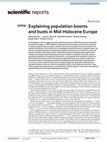
Archaeological evidence suggests that the population dynamics of Mid-Holocene (Late Mesolithic to... more Archaeological evidence suggests that the population dynamics of Mid-Holocene (Late Mesolithic to Initial Bronze Age, ca. 7000-3000 BCE) Europe are characterized by recurrent booms and busts of regional settlement and occupation density. These boom-bust patterns are documented in the temporal distribution of 14C dates and in archaeological settlement data from regional studies. We test two competing hypotheses attempting to explain these dynamics: climate forcing and social dynamics leading to inter-group conflict. Using the framework of spatially-explicit agent-based models, we translated these hypotheses into a suite of explicit computational models, derived quantitative predictions for population fluctuations, and compared these predictions to data. We demonstrate that climate variation during the European Mid-Holocene is unable to explain the quantitative features (average periodicities and amplitudes) of observed boom-bust dynamics. In contrast, scenarios with social dynamics encompassing density-dependent conflict produce population patterns with time scales and amplitudes similar to those observed in the data. These results suggest that social processes, including violent conflict, played a crucial role in the shaping of population dynamics of European Mid-Holocene societies.
Climate and Cultural Change in Prehistoric Europe and the Near East, 2016
It has been suggested that the expansion of farming in western Eurasia was paced by Holocene cool... more It has been suggested that the expansion of farming in western Eurasia was paced by Holocene cooling phases. However, the immediate effects and the mechanisms could not be explained. Based on a fine-graded data set of the West-Central European earl,y Neolithic Linear pottery culture, a refined model of the interaction between climate variability and both population growth as well as decline is presented. 1he changing interrelation between these fluctuations may more thoroughl,y explain the step-wise advance of farming in western Eurasia.
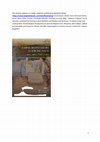
Riede/Sheets, Going Forward by Looking Back: Archaeological Perspectives on Socio-Ecological Crisis, Response, and Collapse, 2020
This chapter discusses possible forcing factors on one of humanity’s most consequential transitio... more This chapter discusses possible forcing factors on one of humanity’s most consequential transition periods, the emergence and the spread of farming. This process was accompanied by enormous technical and economic changes, but also considerable population fluctuations. We focus on a well-researched region in southwest Central Europe and discuss the central question: Were the dynamics of early farming societies – and particularly their decline or even collapse phases – forced by external factors like climate excursions or might at least some phenomena be ascribed to internal mechanisms like changes in social cohesion? From the data presented, it appears that while positive climate fluctuations seem to have had an effect on population growth and also on internal social processes, the latter nevertheless seem to have followed independent inherent dynamics. Also, the climate fluctuations towards the end of the Early Neolithic have had only enhancing but no forcing effects on these internal processes. We argue, that it is necessary to look at complete cycles including the period of emergence and prosperity, instead of focusing just on the short decline events during final phases. Only such a holistic approach enables us to fully understand the mechanisms behind the dynamics of early farming societies in their entirety. From this perspective we here suggest, that the dynamics of Early Neolithic societies, in the study area and possibly beyond, were at least partly determined by fluctuations in the degree of group cohesion.
Summary for stakeholders
Doubtlessly the next decades will be amongst the most challenging periods in the history of humankind. In this they bear a tragic component: for the first time humanity as a whole will be challenged by problems induced by humans themselves, by the Anthropocene and its major alterations in the Earth system, one component being global warming. ...
Antiquity Project Gallery, 2020
In the nineteenth century two Neolithic axe-heads were reported from the Kapellenberg Michelsberg... more In the nineteenth century two Neolithic axe-heads were reported from the Kapellenberg Michelsberg enclosure system. The recent identification of an unusually large tumulus, from which these axe-heads were almost certainly once recovered, reveals that socio-political hierarchisation linked to the emergence of high-ranking elites in Brittany and the Paris Basin during the fifth millennium cal BC may have extended into Central Europe.

Proceedings of the National Academy of Sciences of the United States of America, Jan 8, 2015
Conflict and warfare are central but also disputed themes in discussions about the European Neoli... more Conflict and warfare are central but also disputed themes in discussions about the European Neolithic. Although a few recent population studies provide broad overviews, only a very limited number of currently known key sites provide precise insights into moments of extreme and mass violence and their impact on Neolithic societies. The massacre sites of Talheim, Germany, and Asparn/Schletz, Austria, have long been the focal points around which hypotheses concerning a final lethal crisis of the first Central European farmers of the Early Neolithic Linearbandkeramik Culture (LBK) have concentrated. With the recently examined LBK mass grave site of Schöneck-Kilianstädten, Germany, we present new conclusive and indisputable evidence for another massacre, adding new data to the discussion of LBK violence patterns. At least 26 individuals were violently killed by blunt force and arrow injuries before being deposited in a commingled mass grave. Although the absence and possible abduction of...
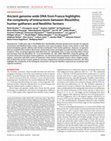
Science Advances, 2020
Starting from 12,000 years ago in the Middle East, the Neolithic lifestyle spread across Europe v... more Starting from 12,000 years ago in the Middle East, the Neolithic lifestyle spread across Europe via separate continental and Mediterranean routes. Genomes from early European farmers have shown a clear Near Eastern/Anatolian genetic affinity with limited contribution from hunter-gatherers. However, no genomic data are available from modern-day France, where both routes converged, as evidenced by a mosaic cultural pattern. Here, we present genome-wide data from 101 individuals from 12 sites covering today's France and Germany from the Mesolithic (N = 3) to the Neolithic (N = 98) (7000-3000 BCE). Using the genetic sub-structure observed in European hunter-gatherers, we characterize diverse patterns of admixture in different regions, consistent with both routes of expansion. Early western European farmers show a higher proportion of distinctly western hunter-gatherer ancestry compared to central/southeastern farmers. Our data highlight the complexity of the biological interactions during the Neolithic expansion by revealing major regional variations.
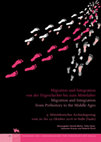
Harald Meller, Falko Daim, Johannes Krause und Roberto Risch (eds.), Migration und Integration von der Urgeschichte bis zum Mittelalter.Tagungen des Landesmuseum für Vorgeschichte Halle (Saale)., 2017
Migrations or larger population movements have so far not yet been discussed for the Mesolithic, ... more Migrations or larger population movements have so far not yet been discussed for the Mesolithic, while the debates have waged for long both for the Palaeolithic and the Neolithic. Focusing on the so-called blade-and-trapeze horizon, a long-distance Pre-Neolithic Eurasian movement of small groups across Asia and into continental Europe is suggested. The genetic reflection of these movements might be the westernmost extension of the eastern hunter-gatherer genetic ancestry, with regional adaptations of the lithic technology by local populations further west. In this model, the origins of the blade-and-trapeze horizon should be sought in eastern Asia, and not – as has also been suggested – in NW Africa. It is furthermore suggested, that a climate anomaly, the so-called 9.2 cal BP or 7.2 cal BC-event, has served as a forcing event for the spread of this lithic horizon into Europe. However, the exact mechanisms of this process are not yet understood.
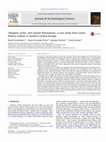
Journal of Archaeological Science, Apr 2, 2013
By applying cycle-based resilience theory the dynamics of the Early Neolithic west-central Europe... more By applying cycle-based resilience theory the dynamics of the Early Neolithic west-central European Linear Pottery Culture (LBK) are investigated. These are interpreted as resulting from a combination of internal socio-economic processes as well as external environmental parameters. Resilience theory is helpful in understanding periods of increased vulnerability and inherent trends to social complexity. Cycles and threshold levels also help to understand why societies experience periods of increasing fragility and subsequent decline.
Results are based on the correlation of a typology and dendrochronology-based archaeological chronology for western LBK and various palaeoclimatic proxy-data. The 14C-production curve is taken as an indicator for solar activity fluctuations, and an age-model for laminated sediments as an indicator for rainfall fluctuations. We currently consider this correlation as agreeably robust; however future fine-dating may result in slight shifts within the archaeological chronology.
According to the applied age model, the simple farming societies of the LBK (5600 – 4900 cal BC) in west-central Europe were not immediately and devastatingly affected by most climate fluctuations. Yet, they might have been one destabilising component within broader processes. However, periods of decreased or irregularly spaced rainfall are contemporaneous to periods of population decline, while periods of increased rainfall may have favoured population growth. Towards the end of the 6th millennium cal BC, the final years of LBK in western Central Europe are contemporaneous to a general trend to less rainfall punctuated by short-term increases in precipitation. During this climatically highly volatile period LBK reaches its highest population rates and at the same time experiences a period of warfare. Thereafter population rates decline and LBK gradually vanishes from the archaeological record, being replaced by Middle Neolithic societies.
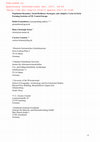
Quaternary International, 2017
Inferred European Holocene population size exhibits large fluctuations, particularly around the o... more Inferred European Holocene population size exhibits large fluctuations, particularly around the onset of farming. We attempt to find explanations for these fluctuations by employing the concept of cycling, especially that of the Adaptive Cycle. We base our analysis on chronologically and chorologically highly resolved ceramic and site data from the Linear Pottery culture (Germ. Linearbandkermik) of the early Neolithic of southwestern Central Europe. Typological seriation with dendrochronological anchor dates provides the age model for these data. Ceramic motifs are analysed with respect to the temporally changing diversity in decoration. The temporal sequence of major decoration motifs is interpreted as an indicator of social diversity: when stylistic diversity is low, social diversity is low and vice versa. The sequence of secondary decoration motifs is interpreted in terms of individual lineage emphasis: when this diversity is low, there is strong emphasis on individual lineage and vice versa. The diversity time series are complemented by a relative population size indicator derived from the count of occupational features. Diversity and population size share a shape that is typical for (part of) an Adaptive Cycle, and they differ in their positioning on the time axisdthey are time-lagged. By relating the different curves to the (metaphorical) stages of the Adaptive Cycle, we find that these cycles progress at non-identical speed
in different aspects of a social system. By relating the social dynamics to well-dated and highly resolved climate fluctuation records, we find evidence that severe climate excursions shaped the location of tipping points in the social system and that these social tipping points precede inferred population decline by several generations.
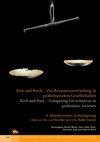
Meller u. a. 2016 H. Meller/H.-P. Hahn/R. Jung u. a. (Hrsg.), Arm und Reich - Zur Ressourcenverteilung in prähistorischen Gesellschaften: 8. Mitteldeutscher Archäologentag vom 22. bis 24. Oktober 2015 in Halle … des Landesmuseums für Vorgeschichte Halle)1 (2016).
A combination of various cycle-based approaches from
archaeology, mathematical modelling, and the... more A combination of various cycle-based approaches from
archaeology, mathematical modelling, and the environmental
sciences suggests that early farming societies produced
political types corresponding to Godelier’s »Great Men« at
the beginning and towards the end of cyclical trajectories. In
the study region, the central European Linear Pottery Culture
(LBK) would have produced the earliest appearance of such
individuals. Once these political types had emerged, societies
seem to have become more stratified, with initial forms of
chiefdom-type societies evolving during the subsequent Middle
Neolithic, and forms of complex chiefdom-type societies
emerging during the Young Neolithic.
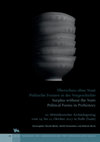
10. Mitteldeutscher Archäologentag vom 19.bis 21. Oktober 2017 in Halle (Saale), Tagungen des Landesmuseums für Vorgeschichte Halle, 2018
From the Foreword (Meller/Risch/Gronenborn):
The 1oth Archaeological Conference of Central Ger... more From the Foreword (Meller/Risch/Gronenborn):
The 1oth Archaeological Conference of Central Germany
addressed the subject of societies which do not appear to fit
into the current understanding of history or which cannot
be explained by it. None of the references we know from historical
and ethnographic sources really help us to explain
monumental earthworks which enclose dozens of hectares
of land but which are unlikely to have been effective as
defensive structures; settlements with hundreds of houses
but no indication of any central administration or elite;
archaeological sites where thousands of people met to hold
enormous feasts, only to disperse again into many small
hunter-gatherer groups; or extraordinary creative and artistic
achievements produced without the patronage of ruling
groups, etc. It is only when we question the widely-held
premise that material wealth is necessarily accompanied
by social inequality that our attention is drawn to those prehistoric
societies whose archaeological remains provide no
clear evidence of an unequal distribution of resources (in settlement
structures or burials, for example) but which nevertheless
developed a level of communication and cooperation
far exceeding that of family or kindred groups. The existence
of such societies undermines the simple antithesis of
»primitive« egalitarian societies and »civilised« hierarchical
ones (states, in particular), with a spectrum of gradations
in-between, which evolutionary ethnology and archaeology
have proposed for over 1oo years, and suggests that quite
different forms of human coexistence are also possible. [...]

RESEARCH BY BRITISH AND AMERICAN SCHOLARS on the transition to farming in Central Europe has resu... more RESEARCH BY BRITISH AND AMERICAN SCHOLARS on the transition to farming in Central Europe has resulted in a number of models which have been viewed with continuous scepticism in Central Europe. Contrary to the often generalised Anglo-American approaches, particularistic traditions, based methodologically and theoretically on culture history and environmental archaeology, have continued, notably in the German-speaking countries but also in France. These have been substantiated by an ever increasing body of meticulously collected detailed data. This ongoing research by a variety of disciplines on the question of the transition to farming in Central Europe, notably in the western parts along the Rhine valley, has by now resulted in a complex and differentiated picture of the so-called 'process of Neolithisation'. This process began during the latter half of the seventh millennium cal BC, then experienced a major shift with the expansion of the Linear Pottery Culture (LBK), and ended in the mid-fifth millennium cal BC. During these two thousand years a multi-facetted combination of migrations, adaptations and acculturations, together with socio-political cycling, led to the fundamental transformation of Central European societies from segmented tribes to emergent complex chiefdoms. The trajectories were triggered by external parameters like climatic fluctuations and internal factors such as human agency. A SLIGHTLY POLEMICAL INTRODUCTION The emergence of farming in the Near East and its spread to Europe is one of the most dramatic and significant processes of economic, social and political change in the history of modern humans. It is therefore unsurprising that this period has received continuous and wide attention in the scholarly
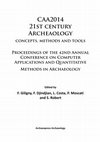
Concepts, methods and tools. Proceedings of the 42nd Annual Conference on Computer Applications and Quantitative Methods in Archaeology
ISBN 978 1 78491 100 3 ISBN 978 1 78491 101 0 (e-Pdf) ii Cartography and heritage: past practice ... more ISBN 978 1 78491 100 3 ISBN 978 1 78491 101 0 (e-Pdf) ii Cartography and heritage: past practice and future potential for mapping Scotland's cultural heritage������������������ 315 Peter MCKEAGUE Visualization based on the Norwegian University Museum Database �������������������������������������������������������������������� 323 Espen ULEBERG, Mieko MATSUMOTO An Inventory of Lucanian Heritage ������������������������������������������������������������������������������������������������������������������������� 333 Alain DUPLOUY, Vincenzo CAPOZZOLI, Alessia ZAMBON Integrating complex archaeological datasets from the Neolithic in a web-based GIS ���������������������������������������������� 341 A simple way to formalize the dating of stratigraphic units ������������������������������������������������������������������������������������ 365 Bruno DESACHY Recognizing temporalities in urban units from a functional approach: three case studies �������������������������������������� 371 An 'alphabet' to describe the spatio-temporal dynamics of settlement systems: a relevant representation of time? �� 393 Marie-Jeanne OURIACHI, Frédérique BERTONCELLO, with the collaboration of Pierre NOUVEL, Territorial organisation of the Terramare culture (Bronze Age, Italy): use of GIS methodology to tackle societal issues ����431 Julie BOUDRY From the excavation to the territory: contributions of GIS tools to the study of the spatial organization of the archaeological site of Argentomagus (France, Indre, Saint-Marcel/Argenton-sur-Creuse) ��������������������������������������� 443 Emeline LE GOFF, Laure LAÜT, Yoann RABASTÉ, Françoise DUMASY The integration of landscape processes in archaeological site prediction in the Mugello basin (Tuscany/Italy) ������ 451 Elmar SCHMALTZ, Michael MÄRKER, Hans-Joachim ROSNER, Adrew-Williams KANDEL The use of Burgundy stone from ancient times to the present day ������������������������������������������������������������������������� 459 Stéphane BÜTTNER, Delphine MONTANGE, Laure SALIGNY, Marion FOUCHER with the collaboration of Eric LECLERCQ, Marinette SAVONNET Exploring Intervisibility Networks: A Case Study From Bronze and Iron Age Istria (Croatia and Slovenia) ��������������� 469 Zoran ČUČKOVIĆ iii Intrasite spatial analysis applied to the Neolithic sites of the Paris Basin: from the archaeological feature to global analysis ����������������������������������������������������������������������������������������������������������������������������������������������������������������� 497 François GILIGNY Statistical and mathematical models for archaeological data mining: a comparison ����������������������������������������������� 509 Nevio DUBBINI, Adam LODOEN Old versus new -introducing image-based 3D modeling into the general documentation workflow of archaeological rescue excavations. Case studies: the Čachtice and Bratislava castles, Slovakia ������������������������������������������������������ 529 Jan ZACHAR, Seta ŠTUHEC Beyond spreadsheets: digitising the archaeological artefact inventory process ����������������������������������������������������� 541 Abstract This paper presents DASIS (Distributed Archaeological Sites Information System) that serves as a virtual research environment for settlement structure analyses. In the past decade heterogeneous datasets of the West-Central European Neolithic have been generated in the context of several research projects.
Beim Blick in die Medienlandschaft fiel in den letzten Jahren auf, dass das öffentliche Bewusstse... more Beim Blick in die Medienlandschaft fiel in den letzten Jahren auf, dass das öffentliche Bewusstsein bezüglich des zukünftig zu erwartenden klimainduzierten kulturellen Wandels deutlich gestiegen ist. Allenthalben treffen Kommissionen zusammen, die sich mit den möglichen Folgen auseinandersetzen und diese in oft düsteren Farben schildern. Neben den wirtschaftlichen sind es besonders zu erwartende soziopolitische Probleme, die im Mittelpunkt insbesondere von Handlungsrichtlinien für politische und wirtschaftliche Führungskräfte stehen. Als Beispiel sei hier der Bericht des Wissenschaftlichen Beirats der Bundesregierung Globale Umweltveränderung (WBGU 2007) genannt, in dem ausdrücklich vor den sicherheitspolitischen Konsequenzen auf globaler Ebene gewarnt wird (Abb. 1). Demnach verstärkt der kommende Klimawandel
Die Michelsberger Höhensiedlung Kapellenberg bei Hofheim. Eine Befestigungsanlage am südlichen Ra... more Die Michelsberger Höhensiedlung Kapellenberg bei Hofheim. Eine Befestigungsanlage am südlichen Rand des Taunus und ihre Einbindung in die Besiedlungsentwicklung im Umland. .. . .



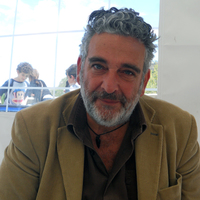
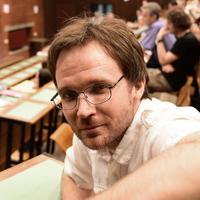

Uploads
Map: Expansion of Farming in Western Eurasia by Detlef Gronenborn
Gronenborn, D., & Horejs, B. (2023). Expansion of farming in western Eurasia, 9600 - 4000 cal BC (update vers. 2023.1). Zenodo. https://doi.org/10.5281/zenodo.10047818
See repository: DOI 10.5281/zenodo.10047818
This work is licensed under a Creative Commons Attribution 4.0 International License.
To view a copy of this license, visit http://creativecommons.org/licenses/by/4.0/
The data or other third party material behind this image are not included in the image’s Creative Commons license. If not indicated otherwise, users will need to obtain permission from the license holder to reproduce the material.
Papers Eurasia by Detlef Gronenborn
Summary for stakeholders
Doubtlessly the next decades will be amongst the most challenging periods in the history of humankind. In this they bear a tragic component: for the first time humanity as a whole will be challenged by problems induced by humans themselves, by the Anthropocene and its major alterations in the Earth system, one component being global warming. ...
Results are based on the correlation of a typology and dendrochronology-based archaeological chronology for western LBK and various palaeoclimatic proxy-data. The 14C-production curve is taken as an indicator for solar activity fluctuations, and an age-model for laminated sediments as an indicator for rainfall fluctuations. We currently consider this correlation as agreeably robust; however future fine-dating may result in slight shifts within the archaeological chronology.
According to the applied age model, the simple farming societies of the LBK (5600 – 4900 cal BC) in west-central Europe were not immediately and devastatingly affected by most climate fluctuations. Yet, they might have been one destabilising component within broader processes. However, periods of decreased or irregularly spaced rainfall are contemporaneous to periods of population decline, while periods of increased rainfall may have favoured population growth. Towards the end of the 6th millennium cal BC, the final years of LBK in western Central Europe are contemporaneous to a general trend to less rainfall punctuated by short-term increases in precipitation. During this climatically highly volatile period LBK reaches its highest population rates and at the same time experiences a period of warfare. Thereafter population rates decline and LBK gradually vanishes from the archaeological record, being replaced by Middle Neolithic societies.
in different aspects of a social system. By relating the social dynamics to well-dated and highly resolved climate fluctuation records, we find evidence that severe climate excursions shaped the location of tipping points in the social system and that these social tipping points precede inferred population decline by several generations.
archaeology, mathematical modelling, and the environmental
sciences suggests that early farming societies produced
political types corresponding to Godelier’s »Great Men« at
the beginning and towards the end of cyclical trajectories. In
the study region, the central European Linear Pottery Culture
(LBK) would have produced the earliest appearance of such
individuals. Once these political types had emerged, societies
seem to have become more stratified, with initial forms of
chiefdom-type societies evolving during the subsequent Middle
Neolithic, and forms of complex chiefdom-type societies
emerging during the Young Neolithic.
The 1oth Archaeological Conference of Central Germany
addressed the subject of societies which do not appear to fit
into the current understanding of history or which cannot
be explained by it. None of the references we know from historical
and ethnographic sources really help us to explain
monumental earthworks which enclose dozens of hectares
of land but which are unlikely to have been effective as
defensive structures; settlements with hundreds of houses
but no indication of any central administration or elite;
archaeological sites where thousands of people met to hold
enormous feasts, only to disperse again into many small
hunter-gatherer groups; or extraordinary creative and artistic
achievements produced without the patronage of ruling
groups, etc. It is only when we question the widely-held
premise that material wealth is necessarily accompanied
by social inequality that our attention is drawn to those prehistoric
societies whose archaeological remains provide no
clear evidence of an unequal distribution of resources (in settlement
structures or burials, for example) but which nevertheless
developed a level of communication and cooperation
far exceeding that of family or kindred groups. The existence
of such societies undermines the simple antithesis of
»primitive« egalitarian societies and »civilised« hierarchical
ones (states, in particular), with a spectrum of gradations
in-between, which evolutionary ethnology and archaeology
have proposed for over 1oo years, and suggests that quite
different forms of human coexistence are also possible. [...]
Gronenborn, D., & Horejs, B. (2023). Expansion of farming in western Eurasia, 9600 - 4000 cal BC (update vers. 2023.1). Zenodo. https://doi.org/10.5281/zenodo.10047818
See repository: DOI 10.5281/zenodo.10047818
This work is licensed under a Creative Commons Attribution 4.0 International License.
To view a copy of this license, visit http://creativecommons.org/licenses/by/4.0/
The data or other third party material behind this image are not included in the image’s Creative Commons license. If not indicated otherwise, users will need to obtain permission from the license holder to reproduce the material.
Summary for stakeholders
Doubtlessly the next decades will be amongst the most challenging periods in the history of humankind. In this they bear a tragic component: for the first time humanity as a whole will be challenged by problems induced by humans themselves, by the Anthropocene and its major alterations in the Earth system, one component being global warming. ...
Results are based on the correlation of a typology and dendrochronology-based archaeological chronology for western LBK and various palaeoclimatic proxy-data. The 14C-production curve is taken as an indicator for solar activity fluctuations, and an age-model for laminated sediments as an indicator for rainfall fluctuations. We currently consider this correlation as agreeably robust; however future fine-dating may result in slight shifts within the archaeological chronology.
According to the applied age model, the simple farming societies of the LBK (5600 – 4900 cal BC) in west-central Europe were not immediately and devastatingly affected by most climate fluctuations. Yet, they might have been one destabilising component within broader processes. However, periods of decreased or irregularly spaced rainfall are contemporaneous to periods of population decline, while periods of increased rainfall may have favoured population growth. Towards the end of the 6th millennium cal BC, the final years of LBK in western Central Europe are contemporaneous to a general trend to less rainfall punctuated by short-term increases in precipitation. During this climatically highly volatile period LBK reaches its highest population rates and at the same time experiences a period of warfare. Thereafter population rates decline and LBK gradually vanishes from the archaeological record, being replaced by Middle Neolithic societies.
in different aspects of a social system. By relating the social dynamics to well-dated and highly resolved climate fluctuation records, we find evidence that severe climate excursions shaped the location of tipping points in the social system and that these social tipping points precede inferred population decline by several generations.
archaeology, mathematical modelling, and the environmental
sciences suggests that early farming societies produced
political types corresponding to Godelier’s »Great Men« at
the beginning and towards the end of cyclical trajectories. In
the study region, the central European Linear Pottery Culture
(LBK) would have produced the earliest appearance of such
individuals. Once these political types had emerged, societies
seem to have become more stratified, with initial forms of
chiefdom-type societies evolving during the subsequent Middle
Neolithic, and forms of complex chiefdom-type societies
emerging during the Young Neolithic.
The 1oth Archaeological Conference of Central Germany
addressed the subject of societies which do not appear to fit
into the current understanding of history or which cannot
be explained by it. None of the references we know from historical
and ethnographic sources really help us to explain
monumental earthworks which enclose dozens of hectares
of land but which are unlikely to have been effective as
defensive structures; settlements with hundreds of houses
but no indication of any central administration or elite;
archaeological sites where thousands of people met to hold
enormous feasts, only to disperse again into many small
hunter-gatherer groups; or extraordinary creative and artistic
achievements produced without the patronage of ruling
groups, etc. It is only when we question the widely-held
premise that material wealth is necessarily accompanied
by social inequality that our attention is drawn to those prehistoric
societies whose archaeological remains provide no
clear evidence of an unequal distribution of resources (in settlement
structures or burials, for example) but which nevertheless
developed a level of communication and cooperation
far exceeding that of family or kindred groups. The existence
of such societies undermines the simple antithesis of
»primitive« egalitarian societies and »civilised« hierarchical
ones (states, in particular), with a spectrum of gradations
in-between, which evolutionary ethnology and archaeology
have proposed for over 1oo years, and suggests that quite
different forms of human coexistence are also possible. [...]
Based on the typo-chronological analysis of time-series of ceramic motifs, and their interpretation as social markers, we suggest that social diversity cycles are decoupled from population cycles, at least for the period under investigation. Thus, they may constitute an independent proxy for social mechanisms. Social diversity cycles may have forced population growth to some extent at least during the Early Neolithic and also may have forced and influenced the emergence and the archaeological visibility of inequality and surplus during the Early to Middle Neolithic transition.
While the remains of the first excavation appear to be lost with only minimal information preserved, the three mounds excavated in 1992 each contained a single interment in the centre of the mound, all three with various burial goods produced from inorganic (metal, glass, stone, cowries) and organic material (cloth, wood, hides). Many artefacts are of regional provenance but some were also imported from distant regions of the Islamic world. Following the currently available radiocarbon measurements, one group of the burials would date to the earlier fourteenth century AD, and judging from typology and art history another burial dates to the later fifteenth/early sixteenth centuries. The site thus covers a crucial phase in history during which the Hausa city states emerged, indicating shifting contacts to the Mediterranean and to the Middle East.
long the complexities of the diverse social, technical and identity forming processes are kept in mind.
Les Européens qui accostèrent en Afrique du Sud à partir de la fin du XVe siècle rencontrèrent des éleveurs qu'ils appelèrent Hottentots (et qui sont aujourd'hui connus sous le nom de Khoekhoe). Nombre de sources écrites évoquent l'habitat et le bétail de ces éleveurs, dont aucun site n'a cependant été clairement identifié par les archéologues. Cette absence de documentation archéologique a parfois permis de conclure à l'invisibilité archéologique des pasteurs nomades. En jaugeant les faits à l'aune des recherches archéologiques conduites en Afrique australe sur les enclos à bétail, cet article livre l'étude d'un site présentant une nappe de matériel étendue et de faible densité, KFS 5 (Western Cape), qui constitue peut-être la trace matérielle d'un kraal khoekhoe datant de la première période de contact avec les Européens. Cette découverte suggère que de tels kraals sont donc bel et bien visibles archéologiquement.
Des recherches archéologiques et ethnohistoriques ont été conduites dans les environs de la ville de Ngala (état du Borno, Nigeria) située immédiatement au sud du lac Tchad. Quatre tertres d'habitat ont été fouillés. La comparaison des matériaux excavés avec ceux des fouilles antérieures, complétée par des analyses ethnohistoriques, a permis de reconstituer de manière assez complète l'évolution du peuplement et la succession des cultures dans cette zone qui se distingue par des conditions environnementales particulières. Il est clair aujourd'hui que les colons du Néolithique récent se sont installés, vers 1000 CalBC, dans des hameaux permanents occupés toute l'année, et que leur subsistance n'était pas uniquement basée sur la chasse, la collecte et la pêche, mais probablement aussi sur l'élevage et la culture du Pennisteum domestique. Certainement l'agriculture est attestée au début de l'Age du fer Ancien, vers 500 CalBC. A partir de ce moment, on observe certes une évolution régulière et soutenue vers plus de complexité, avec l'apparition de gros villages dans le courant du premier millénaire CalAD, et la fondation, au quatorzième siècle, de principautés locales, mais ce n'est pas avant les quinzième et seizième siècles que le mode de subsistance et la structure socio-politique qui caractérisent cette région aujourd'hui se sont véritablement mis en place. A partir de ce moment, la zone à laquelle appartient notre domaine d'étude a été intégrée dans l'empire du Bornou, une situation qui s'est maintenue jusqu'au début de la période coloniale, à l'aube du vingtième siècle.
the course of the southbound expansion of Islam and associated trade and contacts. The relatively recent discovery of extensive walled settlements at
the transition from the Neolithic to the Early Iron Age in the Chad Basin indicates what enormous sites and processes may still await recognition.
Hierarchical structures may well already have existed during the first millennium cal. BC, continuing into the early first millennium AD. The central Sahel
came under the sway of the Fulani jihad during the early nineteenth century and about a hundred years later was divided between the European
colonial powers of Britain, Germany, and France.
occurred, namely sedentism, the introduction of farming and animal rearing as well as container pottery technology, both among farmers and huntergatherers.
These new technologies and economies had arrived from outside, the Near East and possibly central and eastern Asia. At least partly,
these innovations were brought in by migrating people whose movements may have been triggered by climate fluctuations.
Ein Gemeinschaftsprojekt der Stadt Hofheim und des Römisch-Germanischen Zentralmuseums
Seit dem 22. August 2020 können sich Besucherinnen und Besucher des Kapellenbergs auf einen Archäologischen Rundweg begeben, der sich mit der bewegten Geschichte des Hofheimer Hausberges beschäftigt. Die Spuren der Besiedlung reichen bis in die Jungsteinzeit zurück. Ein Höhepunkt ist die 6000 Jahre alte Wallanlage aus der Zeit der Michelsberger Kultur, die noch deutlich zu erkennen ist. Der vier Kilometer lange Rundweg mit seinen Informationstafeln liefert Interessierten viele Hintergründe zum Kapellenberg in den verschiedenen Epochen. Unter Einberechnung von Lesezeit für Tafel und Stelen sollten sich Interessierte zwei Stunden für die Begehung Zeit nehmen. Startpunkt des Wegs ist am Aufgang zum Meisterturm, abzweigend vom Kreuzweg.
Mit dem Beginn der Landwirtschaft erlebte die Geschichte der Menschheit einen Quantensprung: Sesshaftigkeit und regelmäßige Ernten zogen ein Bevölkerungswachstum nach sich und es kam zu komplexeren gesellschaftlichen Strukturen. Allerdings verlief dieser Übergang nicht so abrupt wie immer wieder dargestellt. Vielmehr vollzog sich jener vielschichtige Prozess in Mitteleuropa über viele Jahrhunderte zwischen ca. 6500 und 3500 v.Chr. Dieser Meilenstein in der Zivilisationsgeschichte wird in dem reich bebilderten Band mit Fokus auf dem deutschsprachigen Raum anschaulich erläutert. Renommierte Fachleute präsentieren die neuesten Forschungsergebnisse anhand von aussagekräftigen und spannenden Beispielen (Umschlagtext des Verlages).
Für Europa, ja letztlich das gesamte westliche Eurasien, liegen die Anfänge der Nahrungsproduktion im Vorderen Orient im Bereich des sogenannten Fruchtbaren
Halbmondes. Dort kam es nach dem Ende der Eiszeit zur Kultivierung natürlich vorkommender Wildgetreide und der Haltung heimischer Wildtierarten
wie Schaf, Ziege, Rind und Schwein. Ab etwa 9000 cal BC entwickelt sich über einen Zeitraum von mehreren hundert Jahren aus sesshaften oder wenig mobilen
Sammler-Jäger-Gruppen komplexe bäuerliche Gemeinschaften, die schließlich aus dem Ursprungsgebiet in westlicher und östlicher Richtung expandierten. Diese Neolithisierung war durch eine Reihe von Eigenheiten gekennzeichnet, die unter dem Begrif „Neolithisches Paket“ subsumiert werden; zum Beispiel eine sesshafte Lebensweise in festen Häusern und Dörfern oder, ab 7000 cal BC, die Nutzung von Keramik.
Zwar ist diese Neolithisierung die früheste weltweit, aber auch in anderen Regionen haben die Menschen Bodenbau und Viehzucht entwickelt, häuig in völlig anderen Formen als es für das westliche Eurasien typisch ist. Vielfach wird auch gar nicht der Begrif „Neolithisierung“ verwendet, so etwa in Amerika und weiten Teilen Afrikas ...
During the nineteenth century the region came into the focus of the economic expansion of the European powers, among them Germany. Despite the following colonial conquest some of the traditional African states persisted until today as for instance the Hausa city states and the Borno Emirate in Northern Nigeria.
The volume introduces to the general area and examines the emergence and the expansion of these empires over the last one thousand years. A particular focus is laid on spectacular finds from a high-status burial site which illustrate the role of West Africa within the global economy at the turn from the Medieval to the Post Medieval Period.
Low resolution version! Some images are available in higher resolution from "teaching documents" section on this platform
Low resolution version! Some images are available in higher resolution from "teaching documents" section on this platform
Low resolution version! Some images are available in higher resolution from "teaching documents" section on this platform
Grabung und Prospektion 2015
This work is licensed under a Creative Commons Attribution 4.0 International License. To view a copy of this license, visit http://creativecommons.org/licenses/by/4.0/
This work is licensed under a Creative Commons Attribution 4.0 International License.
To view a copy of this license, visit http://creativecommons.org/licenses/by/4.0/
The data or other third party material behind this image are not included in the image’s Creative Commons license. If not indicated otherwise, users will need to obtain permission from the license holder to reproduce the material. References are given in the article cited above, which is freely available from this platform.
This work is licensed under a Creative Commons Attribution 4.0 International License.
To view a copy of this license, visit http://creativecommons.org/licenses/by/4.0/
This work is licensed under a Creative Commons Attribution 4.0 International License.
To view a copy of this license, visit http://creativecommons.org/licenses/by/4.0/
This work is licensed under a Creative Commons Attribution 4.0 International License.
To view a copy of this license, visit http://creativecommons.org/licenses/by/4.0/
The study deals with archaeological and ethno-archaeological as well as ethnohistorical investigations in the southern Chad Basin of Nigeria between 1992 and 1998 in the context of the employment of the author in the Collaborative Research Focus 268 "Cultural Development and Linguistic History in the Natural Region of the West African Savannah", and a postdoctoral fellowship of the German Research Foundation (DFG).
The time frame is the 7th/8th century AD to 1925, the main theme is the development of complex Iron Age societies in the region and their transformation in the integration of space into the expanding empire of Kanem-Borno.
-----
Die Studie behandelt archäologische und ethnoarchäologische wie auch ethnohistorische Untersuchungen im südlichen Tschadbecken Nigerias in der Zeit zwischen 1992 und 1998. Die Untersuchungen fanden im Rahmen der Anstellung des Verf. im Sonderforschungsbereich 268 "Kulturentwicklung und Sprachgeschichte im Naturraum Westafrikanische Savanne" sowie eines Habilitationsstipendiums der Deutschen Forschungsgemeinschaft statt.
Zeitrahmen ist das 7./8. Jh. n. Chr. bis 1925, Hauptthema die Entwicklung komplexer eisenzeitlicher Gesellschaften in der Region sowie ihre Transformation bei der Eingliederung des Raumes in das expandierende Reich Kanem-Borno.
In der letzten und in dieser Woche sind zwei Publikation erschienen, in denen genau diese Fragestellung an einfachen Bauern- und Sammler-Jäger-Gesellschaften untersucht wurde.
https://archaeologik.blogspot.com/2020/10/wie-vielschichtig-ist-geschichte-zwei.html
https://archaeologik.blogspot.com/2020/05/wer-gewinnt-den-wettlauf-um-die.html
https://archaeologik.blogspot.com/2020/04/die-covid-19-pandemie-teil-3-die.html
Link:
https://archaeologik.blogspot.com/2020/03/die-covid-19-pandemie-aus-einer.html
Mittlerweile meldeten sich die Bauernverbände zu Wort, denn der mangelnde Niederschlag führt zu teils massiven Ernteeinbußen, die Bundesregierung muss helfen, die Beratungen
laufen. Noch, so scheint es, ist aber die Lebensmittelversorgung gesichert, einstweilen.
Der letzte Punkt regt an, einen Blick in die Vergangenheit zu werfen, denn Extremsommer sind in Mitteleuropa zwar selten, aber auch schon lange vor den globalen Auswirkungen der durch den Menschen verursachten Erwärmung, immer wieder vorgekommen.
For this to understand it is necessary to look at Bannon’s intellectual background. His ideas and political maneuvering as editor, advisor and now messenger, are based on cycle-based historical theories, namely the Strauss-Howe generational or Fourth Turning theory.
(lightly extended English version of: D. Gronenborn, Europäische Gesellschaften beruhen auf Migration – ein kurzer Blick in lange Zeiträume. Archaeologik (28.10.2015). - http://archaeologik.blogspot.de/2015/10/europaische-gesellschaften-beruhen-auf.html)
Im Rahmen der simultanen Ausstellung „8 Museen, 8 Objekte“ der Leibniz-Forschungsmuseen stellt das Römisch-Germanische Zentralmuseum (RGZM), Leibniz-Forschungsinstitut für Archäologie, in Mainz die Kopie einer orientalischen Metallschüssel aus dem 14. Jahrhundert vor.
Prologue I Afrique, les défis de l’histoire, par François-Xavier Fauvelle
Partie I
Introduction I Les continents de l’histoire africaine par François-Xavier Fauvelle
1. L’Egypte, oasis africaine par Damien Agut
2 Les Royaumes de Kerma, Napata et Méroé par Matthieu Honegger
3 L’Afrique antique, de Carthage à Aksum par Pierre Schneider
4 L’Afrique, nouvelle terre d’Islam par Julien Loiseau
5 Le monde Swahili par Philippe Beaujard
6 Ghâna, Mâli, Songhay, royaumes courtiers du Sahel occidental par François-Xavier Fauvelle
7 Du Kanem-Bornou aux cités Haoussa, Empires, Islam et commerce au Sahel central par Detlef Gronenborn
8 La Nubie, des royaumes chrétiens à la domination islamique par Robin Seignobos
9 L’Éthiopie chrétienne et islamique par Marie-Laure Derat
10 Igbo-Ukwu, Ifé et les régions du Golfe de Guinée par Gérard L. Chouin
11 Les royaumes Kongo et Luban, cultures et sociétés dans le bassin du Congo par Pierre de Maret
12 L’ouverture atlantique de l’Afrique par Gérard L. Chouin
13 Ecritures de l’histoire en Afrique par Bertrand Hirsch
Partie II
Introduction I La fabrique de la diversité culturelle par François-Xavier Fauvelle
14 L'Afrique après le grand aride par François Bon et Clément Ménard
15 La Préhistoire récente du Sahara par Michel Barbaza
16 Les premières sociétés de production en Afrique par Jessie Cauliez, Tiphaine Dachy et Xavier Gutherz
17 Des pasteurs et des vaches par Joséphine Lesur
18 L’Afrique des métaux par Caroline Robion-Brunner
19 La longue histoire des chasseurs-cueilleurs d’Afrique par Serge Bahuchet
Partie III : L’atelier de l’histoire
Introduction I De la trace au document par François-Xavier Fauvelle
20 Linguistique et archéologie, comment reconstruire l’histoire depuis 12 000 ans par Roger Blench
21 L’histoire de l’Afrique et ses matérialités par Scott MacEachern
22 Les sources orales et l’histoire de l’Afrique, par Théodore Nicoué Gayibor
23 Comment écrire l’histoire de l’Afrique ancienne avec de l’art ? par Claire Bosc-Tiessé
Many of these studies rely on global climate proxies such as the GISP 2 ice cores or total solar irradiance. However, proxies for local climate fluctuations have rarely been identified and tested for their possible relevance for human subsistence or societies. Furthermore, it remains uncertain as to how environmental changes documented in supraregional or even global proxies may have actually affected local environments. The fact that these scale-related problems have often been neglected is certainly a result of the difficulties in finding reliable and high-resolution climate indicators which may be linked with the archaeological record. In this session, we will examine new and robust methodologies and the re-analysis of old data from new angles. We invite speakers to demonstrate approaches that take a local perspective and explore medium-range social developments in conjunction with local climate archives to investigate their possible interrelationships.
Sous la direction de François-Xavier Fauvelle
Une histoire unique, foisonnante et inattendue
En librairie le 10 octobre 2018
Belin Éditeur, Collection "Mondes anciens"